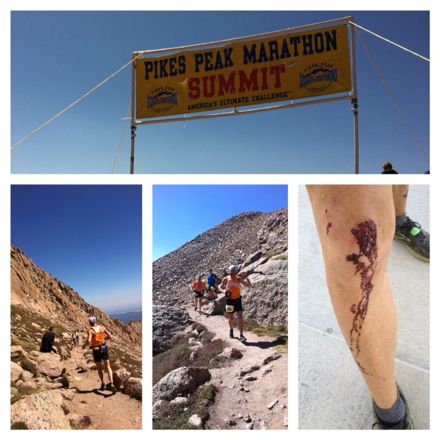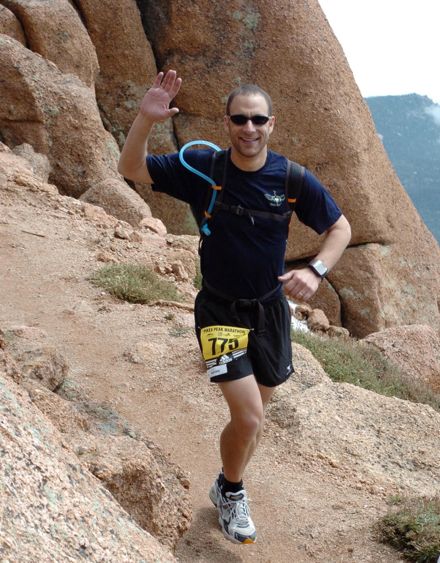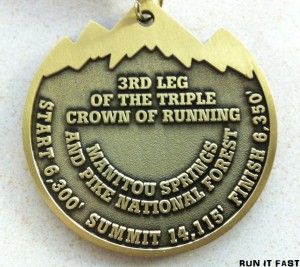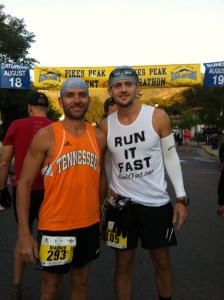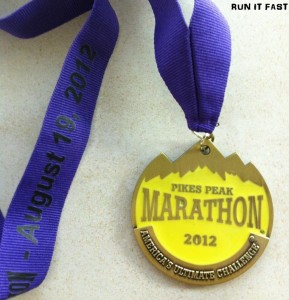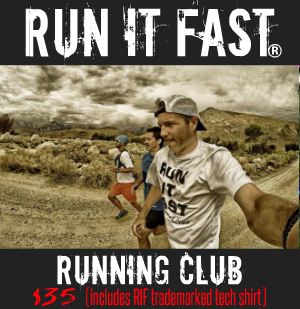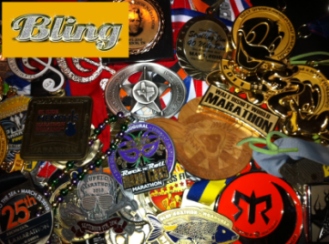42 Mini Race Reports: Joshua Holmes’ 2012 in Review
Here is a quick look at the 42 races I ran in 2012. That total is comprised of 32 ultras and marathons that averaged 50.50 miles and ten shorter races consisting of 10k’s, 5k’s, etc.
2012 Marathons and Ultras for Joshua Holmes
- Walt Disney World Marathon (26.2) – 3:32:23 – One of my faster marathons. Great training with James Krenis leading up to this race to help him to reach his goal of running a sub-4 hour marathon. If you had to train for one marathon and really wanted a big, grand experience with a lots of sights and people then the WDW Marathon should be on your list. – January 8, 2012
- Maui Oceanfront Marathon (26.2) – 3:37:58 – I broke a couple of ribs surfing two days prior to this race. I could only take half breaths and rib cage/chest/arm became extremely painful the last 15 miles. Couldn’t lift arm afterwards without extreme pain in ribs. Always fun catching up with the speedy RIF #70 Chuck ‘Marathonjunkie’ Engle. Maui Oceanfront is a beautiful marathon with amazing views the last 18 miles along the coastline. – January 22, 2012
- Jackson Jackass 50K (31.0) – 6:29:29 – A race I decided to put together to help a friend run his first 50K. I was nursing a broken rib so I was cautious throughout the race, yet still slipped and fell 10x on this very muddy and messy course from heavy rains the night before. A very challenging yet fun day. – February 4, 2012
- Carl Touchstone Memorial 50 Miler (50.0) – 10:22:07 – This was a very muddy and wet course. Over 80 water crossings, most thigh high and extended for 20-30 feet at a time. A tough day with the conditions but solid performance considering the conditions. The joy from this one was helping RIF #3 Jonathan Bobbitt train for this race and successfully complete it. I also enjoyed running part of the race with RIF #12 Kevin Leathers and RIF #24 Emily Conley. – March 3, 2012
- Rock ‘n’ Roll New Orleans Marathon (26.2) – 3:59:41 – Drove down to NOLA immediately after finishing the MS 50 Miler the night before. Big thanks to RIF #38 JD Favara for picking up my bib for this one. I was horrible, sluggish and not very good for the first 18 miles. I was on a 4:15 pace to finish yet came alive the last 8 miles to slide under 4 hours. I enjoyed catching up with several RIF members from Jackson after the race including RIF #35 Todd Shadburn. – March 4, 2012
- Land Between the Lakes 50 Miler (50.0) – 9:25:33 – A new 50mi PR after setting one the prior weekend down in Mississippi. I felt pretty good for most of this race. It was cold at the start yet bearable. I pushed hard at the end to go sub 9:30. It turned out to be a comfortable and beautiful day to run. It was good seeing my good friend RIF #2 Naresh Kumar before, during this race, and at our post-race meal at the po’chop place. – March 10, 2012
- Savage Gulf Trail Marathon (26.2) – 7:25:52 – An inaugural event that no one knew anything about. The most difficult and most beautiful marathon I’ve run to date. Lots of the course was un-runnable due to intense roots and boulders. A must do for the serious marathoner than is not afraid of a challenge. You will only PR at SG if it’s your first marathon ever. Met RIF #18 Rick Jarvis during the early miles of this one. – March 17, 2012
- Umstead 100 Miler (100.0) – 23:36:11 – This was another 100 PR for me, and I had the chance to share the course with good friends RIF #57 Trent Rosenbloom, Beth McCurdy, RIF #88 Hideki Kinoshita, RIF #92 Steven Lee, etc. I was strong for the first 50 then my legs started to fall apart a bit. I walked most of the last loop and was happy to finally have a sub-24 hour 100 mile finish. It concluded a crazy March of racing. – March 31, 2012
- St. Jude Country Music Marathon (26.2) – 3:34:17 – I have historically ran very poorly at this event in the past. It was my only race scheduled for April and maybe that helped me some this time. I was coming off some minor injuries from Umstead but felt semi-healthy. This is the first race I ran in Hokas. A lot of people faded during this one due to the heat, but I stayed pretty strong throughout. Ran into RIF #63 John Hudson and RIF #35 Todd Shadburn shortly after finishing. RIF also had a large number of members show up for the pre-race photo. – April 29, 2012
- 34th Annual Strolling Jim 40 Miler (41.2) – 7:34:43 – Another event I haven’t performed extremely well to date at. I was off to a good day as it was overcast and cool the first 15 miles to start this one. Then at my mile 15 drop bag I downed 3 Boosts and a couple of other things. At about that time the sun came out to play and my stomach was never the same. I spit up various things for most of the last 25 miles but pushed hard, especially the last 10 miles, to have a relatively strong finish. Always a great party after the race and I enjoyed spending time with several RIF members and friends. – May 5, 2012
- Scenic City Trail Marathon (26.2) – 3:57:31 – I ran this race in 4:27:34 the previous year. So I went in wanting to go sub 4-hours as my goal. I pushed the pace early on the first loop and was able to keep it close to the first loop pace on the second loop. I was strong until the last 2 or 3 miles but being so close to sub-4 helped me push to finish under my goal. A great race put on by the Rock/Creek people. – May 19, 2012
- Run Under the Stars RUTS (10 Hours) – 55 miles – My most miles put down at RUTS in my three years running this race. This is a great event and one of my favorites. It’s like a party within a race or a race within a party. About 20 Run It Fast – Club members ran this one and helped make it a blast. Enjoyed watching good friend RIF #151 Chris Estes put down 63 miles. – June 9, 2012
- The Jackal Trail Marathon (26.2) – 4:32:32 – Another event that I put together that went off really well. It was a very hot mid-June day in West Tennessee that upped the degree of difficulty a bit. I felt good throughout, finishing third overall, and used it as heat training in case I decided to run The Last Annual Vol State 500K in July. – June 23, 2012
- The Backass Jackal Trail Marathon (26.2) – 4:52:51 – I ran the previous day like it wasn’t the first of back to backs. I ran about 2 miles before the race as I was trying to set up water coolers and find Sulaiman before the start. My legs were tired from the prior day, but I was competitive as RIF #151 Chris Estes and I battled throughout the day for the win which he ended up with. Five of us finished this one after doing The Jackal Trail Marathon the day before. – June 24, 2012
- The Last Annual Vol State 500K (314.0) – 5:17:04:04 – An epic race that I did for the first time last year. I wanted to just finish the race in 2011, but this year I wanted to be competitive and see how well I could perform over this grueling slugfest that covers 314 miles on hot asphalt in Tennessee and touches several other states. The weather was a chill 85 degrees the first day, and I decided to take advantage of it and see how many miles I could put down before finding rest. I recorded 93 miles in 23-hours before heading to the hotel where naturally I couldn’t really sleep. During the next day I covered 49 very slow miles. To make a long story short I was in fourth place after four days and ended up with a mad fury of miles on the last day and sped up Sand Mountain to finish second place overall with a time of 5 days and 17 hours. Special thanks to RIF #13 Mikki Trujillo, RIF #2 Naresh Kumar, RIF #183 Kirk Catron, and RIF #143 Scott Flowers for helping crew me for all or parts of this epic race. – My Full Vol State 500K Race Report – July 12, 2012
- Blister in the Sun Marathon (26.2) – 3:58:16 – A challenging race in Cookeville, TN that good friend Josh Hite has put on the last three years. It’s a 5-loop course on what is usually a very hot day. I was still recovering from Vol State but didn’t want to miss this one since I’d get to see many of my best marathon running friends. I ran a bit better than I thought I would considering my Vol State rust. I originally thought I’d take it easy and run something over 4 hours. I got in a groove though among RIF #79 Dallas Smith, RIF #196 Bill Baker, and RIF #186 Danny Staggs and pushed probably harder than I needed to but was honored to finish just a few seconds behind the great Dallas. – August 5, 2012
- Pikes Peak Marathon (26.2) – 7:59:23 – For a West Tennessee boy from the flathills this turned out to be quite the challenge. I’m sure I was a bit dead-legged coming in but this turned out to be a really tough, dizzy, and staggering day for Cosmo. The run starts at around 6,500 feet and goes up to 14,115 feet at the halfway point before gravity pulls you back down to the starting line to finish. I did pretty well the first 10 miles going up but then the altitude gave me a headache, made me a bit dizzy, and I started staggering like a drunk. If you trip to the left going up then you fall several thousand feet to your death. I took it easy as I didn’t feel right the miles leading up to the summit and for several miles on the way back down. I ran pretty well the last 4-5 miles. It was a beautiful climb and view from the top of Pikes Peak, but from a running perspective I did nothing that day that should be put into a time capsule. I did enjoy spending time with RIF #83 Brad Box who had a good race. – August 19, 2012
- Lean Horse 100 Miler (100.0) – 22:41:28 – Leanhorse happened to be just a week after Pikes Peak, but I felt pretty good going into it. This was my second time running this race so that was worth something. This race takes place in beautiful South Dakota. I stayed at a hotel close to the convention center where the buses would depart from for the starting line at 5:30am. I mistimed walking over that morning and missed the buses. Luckily, I was able to hitch a ride with an older couple at the hotel next door that was going to the starting line 15 miles away to see their daughter start this one. Leanhorse has the best running surface I’ve run on at any race. It’s a very finely crushed limestone/dirt mixture that is smooth and easy on the legs. Being late to the starting line, I forgot to take a pre-race Roctane and a couple of other things. Luckily over the course of a 100 miles you have time to remember that and catch up without falling too far behind. I ran well at Lean Horse for a majority of the race. My bottle went dry a couple of times during the hottest part of the day and my stomach got a bit upset, but a sweet woman from Canada and Lanier Greenhaw gave me some ginger during the race and it settled it down. My goal was to improve upon my 26:30 time from the year before and go sub-24 hours. I tired over the last 20 miles but kept pushing and was able to finish LH with another new 100 mile PR of 22:42:28. A great 100 I’d recommend to anyone looking for a new one or for a place to run his or her first 100. – August 25, 2012
- Tupelo Marathon (26.2) – 4:05:33 – Tupelo was the week after Lean Horse, but I had signed up for it months before and wanted to run it again and see many of my running friends. Tupelo is a rolling course with some minor hills that starts at 5am in the morning, in the dark, before it gets too hot and humid. However, the heat never really came this year but it was extremely humid from the opening bell. I felt like I struggled and had a mediocre first half but after a quick pit stop and reversing direction for the second half I ran well and passed many people. I realized I was pushing too hard to go sub-4 during the last 5 miles or so. I finally realized I would likely miss sub-4 by a minute or two so I pulled back a bit and played it safe to finish. I was still really drained and tired but enjoyed the food and fellowship after the race as a few others and myself waited at the finish line for everyone to finish. – September 2, 2012
- Endure the Bear 50K (31.0) – 6:29:46 – This was a first year race that took place in Big Bear Lake, California, which is high up in the mountains in a very beautiful Gatlinburg-esque town. I had no clue what to expect going in to this one. What’s new, right? RIF #5 Lisa Gonzales met me at the start with some Roctane (since I was out), and we caught up for a bit before this one started. It was a straight up-hill climb for the first 5 miles or so then it had big hills up and down throughout the day. One of the more challenging 50K’s I’ve run. I was very tired at the end but pleased with my effort overall. – September 9, 2012
- Big Sur Trail Marathon (26.2) – 4:07:02 – I gave RIF #5 Lisa Gonzales a ride up to this race since it would be way too risky and dangerous riding with her. Big Sur was a beautiful marathon that took you up towards the heavens for the first 3 miles before dumping you amongst the big trees with sneak peaks of the blue Pacific Ocean from time to time. I ran stronger and faster with nearly every mile and with the intense descent back down to the finish for the last 3 miles I blistered a couple of sub-7 minute miles to finish 10th overall and with a pretty fast time on a challenging trail marathon course. I also tweaked or did something to my left knee during those last couple of miles as well. – September 29, 2012
- Yellowstone-Teton 100 Miler (100.0) – 21:23:55 – This race was a lot of fun and amazing on several levels. It’s only the second race I’ve ever had a crew to help me out with. I was very thankful that RIF #5 Lisa Gonzales made the trip to Idaho/Montana to crew me for this one. She was really a great help outside of finding me a cheeseburger. I have to admit it was a bit daunting at the start of this one. The race started in West Yellowstone at 6am. It was pitch black and 9 DEGREES. It was briefly overwhelming to be that cold, that dark, that early in the morning knowing I had 100 miles to run. Three miles in my handheld was frozen solid. I ditched it and would only drink water when I’d see Lisa. The sun finally did come up and the temperature did a bit as well. It got up to about 46 during the warmest part of the day before dipping back down to the low teens once the sun hibernated again. I was having a great day for about the first 30 miles then I tore something in my left knee that progressively got worse for the next 12 miles. At about mile 42 it was so painful and uncomfortable that it was a struggle to walk much less run. I was about 98% sure I was going to drop when I decided to change shoes and put this compression sleeve around the knee. I then rolled the sleeve up and down until the pressure was so intense that I could barely feel anything. The knee was still painful but with every step thereafter I was able to block it out more and more. I then began to run more and walk less and thoughts of dropping started to recede from my mind with each mile I was able to click off. I think the extreme cold helped once the sun went down. It was distracting and helped take my focus off my knee. I knew I likely could do serious damage to my knee and be out of commission for awhile, but I was on a PR pace and in the Top 10 for most of the day so as a stubborn ultramarathoner I kept ‘falling forward.’ I wasn’t fluid with my running over the last 60-70 miles, but I gave it everything I could. I was able to finish with a new PR, a top 5 finish, and an age group win. – October 6, 2012
- Javelina Jundred 100K (62.0) – 16:33:34 – This was by far my worst race of the year and perhaps my life. I signed up for the 100 miler yet had only been hiking since Yellowstone since my knee was still jacked up and on strike. I think my meniscus was torn. So my first step of JJ was the first I had run in almost a month. I didn’t know how my knee would hold up or respond until landing that first time. I found out it wasn’t 100%, but it was never a concern for me on this day as too many other things turned out to be more pressing and depressing. My first loop and a half (roughly 21 miles) I was great and ran extremely well. Then when I hit my second drop bag on the second loop everything went south. Like south of Hades south! I drank a couple of Boosts, had some food, and switched water bottles since my strap had broken on my main one. I don’t know if it was the JJ water or food poisoning but over the next few hours I visited the porta-potty about 15x and in a not to be shielded from the intense sun kind of way. From that mile 22 point for the next 5-6 miles I was in a bad place. I felt like I was getting stabbed in my stomach to the point I couldn’t even walk. Someone or something was holding me hostage within my stomach and they weren’t exactly abiding by the constitution. All I could do was bend over to my toes and wait for it to subside a bit so I could slowly walk some more. At one point there was no porta-potty for at least 3 miles and I needed one bad so I wandered off into the desert (no trees) and finally found a small incline that would have to suffice as a prop. From there, which was pretty low, I didn’t think it could get any worse but it did. A few minutes later I was on all 4’s between two cacti puking once then twice. Dozens of runners passed, some laughing, as I was just happy to still be alive. The puking helped a little. I was able to walk slowly after that. All I wanted to do was get to the aid station at 28 for porta again and then walk the 2 miles back to headquarters at 30 and drop. So I’m walking slowly towards 28 when I scoot over slightly for a runner to pass when I suddenly feel this piercing, striking pain in my right thigh. I look down and this cactus ball had jumped off the cactus and stapled itself through my shorts with over 100 of it’s barbed needles. I had no words. I tried to pull it off and it wouldn’t come off. I then decided to run with it before deciding better that I needed to get it out or it might cause some sort of infection or be poisonous. So i finally grabbed the bottom of my shorts and ripped them away from my skin as hard as I could and it violently came off leaving 60-80 needles still lodged in my skin. I stopped to take them out one by one as I was literally shaking my head in disbelief. Finally, un-barbed, I began my march again. The Garmin data would later tell me I put down a 48-minute mile during this stretch. My stomach was still a mess, ginger wasn’t helping, and I was trying to get back to mile 30 so I could drop and go back to the hotel. I finally finished the loop and I was still sick yet for some odd reason, instead of heading to the car, I took that first step onto the third lap (walking) as I did slowly for the next six miles. Finally, I started to feel a bit better and ran pretty well from 36 to about mile 50. That is when the sun started to set. I also realized that due to my stomach that I had not consumed any calories in hours. That reason along with the tricky footing in the dark among the rocks made me start to reevaluate my goal. I didn’t want to injure my knee worse, and I also knew I’d have a hard time catching up on calories. I then decided to make it back around to the headquarters and take the 100K finish that is offered for finishing 4 loops and count my blessings that I was able to push through for 40 more miles and finish 100k after my intense brush with the dark side earlier during the race. I felt pleased with my effort and what I had overcome on this day to accomplish a meager 100k. One that will never come close to the personal record books but that will never, ever be forgotten. – October 27, 2012
- Catalina Eco Marathon (26.2) – 4:40:32 – This was a very beautiful race on Catalina Island. It’s a small island that takes 1-hour to get to from Los Angeles. If you can survive the ferry ride without losing your breakfast then that’s half the battle. This was another race where we gained around 1,500 feet the first 4 miles before it leveled for some fun and scenic running. It was extremely windy throughout this one and it felt at times as if it was going to blow some of us off the cliffs. I ran well until around mile 18 or 19 when I hit the Catalina Crush. I was already starting to be crushed before it, but the CC is a climb that can’t be run by us mortals. It’s extremely steep as you can only stare at the heavens as you walk up it. I managed over the next 3 miles or so and then ran strong down the semi-technical trail for the last 3 miles back to the finish. A must-do race if possible or within your budget. I’ll be back to this one at some point for sure. I enjoyed meeting RIF #69 Nadia Ruiz Gonzales and Aaron Nowlin on the ferry over to Catalina. – November 10, 2012
- Malibu International Marathon (26.2) – 4:21:15 – RIF #5 Lisa Gonzales picked me up and hauled my tired legs and body to the start line of this one in Malibu. The first 10-12 miles is inland and boring. My legs were bored and tired as well from the beating they took the day before at Catalina. But around mile 12 we reached the ocean and ran on the Pacific Coast Highway along the ocean all the way back to Zuma Beach in Malibu. It was beautiful, scenic, and I saw a couple of dolphins jumping in and out of the water as I was running. It’s flat with a handful of medium sized hills near the end. – November 11, 2012
- Harpeth Hills Flying Monkey Marathon (26.2) – 3:49:30 – My favorite road marathon of the year and one of my all-time favorite races. I had to start with the early-starters due to a death in the family. I missed out on some of the festivities having to do that but still had a lot of fun running this race on what turned out to be a cold November morning. I was the first across the finish line (of the early starters 😉 ) Many more finished ahead of me from the regular field. This race is such a great homecoming of great runners and friends from across the South.. The post-race spread is worth the price of admission itself. Big thanks to RIF #57 Trent Rosenbloom for all the hard work he puts into making this event great. Thanks to RIF #151 Chris Estes and RIF #5 Lisa Gonzales meeting me before the early start. – November 18, 2012
- Black Diamond 40 Miler (40.5) – 6:22:48 – Another race I put together that went extremely well according to those that took part. RIF #65 Jonathan Harrison set a blistering pace for the first 30 miles as I couldn’t catch him. Then as we approached Humboldt I started to gain ground and passed him once we made it into the city. I felt good for the first 34 and PR’d 50K and other splits. I ended up winning this race by about 9 minutes (and a new 40 mile PR). I had such fun watching several RIF club members set PL’s (personal longs) in knocking back 40 miles for the first time. – November 23, 2012
- Death Valley Trail Marathon (26.2) – 3:57:02 – There was great weather this year for the Death Valley Marathon after the wind cancelled the official version last year. This race has a slow gradual climb up until about mile 12.5. From that point it drops from 5,300 ft down to sea level (0) at the finish. It was all about the Quad City DJ’s on that intense downhill. I left everything on the course and ran it as if I didn’t have another marathon scheduled for the next day. I’d highly recommend this one to anyone who loves a challenging race with unique and powerful views along the way. – December 1, 2012
- Rock ‘n’ Roll Las Vegas Marathon (26.2) – 4:14:51 – Dead legs and just an overall cranky body from the Death Valley Trail Marathon the day before made for a miserable first 16 miles in Sin City. I ran into RIF #114 Rigoberto Tellez at mile 16 and seeing a fellow RIFer, that I was not expecting to see, among the masses picked up my spirits. We ran together and paced each other for the next four miles. I picked up the pace from there and finished with a decent overall finish. I had calculated around mile 15 I was on pace for a horrible 4:45 finish so I was pumped with how it ended up turning out. I also enjoyed meeting and talking to RIF #20 Laura Raeder before the start of the race. RNR did a great job fixing the problems with this race from the year before. – December 2, 2012
- Lookout Mountain 50 Miler (50.0) – 10:24:06 – LM50 was my first 50 miler a couple of years prior. I had no clue what I was doing that day back in 2010. Luckily, I’ve raced a lot since then and learned a lot along the way. I was curious to see how much I had improved since that first time on Lookout. I came in with tired legs and a couple of nagging things but overall I felt pretty good. Two years ago I ran this race in 13:02:23. I ran well for the first 25 miles and had a nice split, but from 28-38 something didn’t feel right. I was off and struggled through those miles. However, I was able to sew it back together, and I finished strong over the last twelve miles and was very pleased with my time, knocking almost 2 hours and 40 minutes off my 2010 time. However, my favorite part of this race was getting to run it with several RIF members including RIF #57 Trent Rosenbloom and RIF #65 Jonathan Harrison and seeing RIF #83 Brad Box, RIF #221 Karl Studtmann, RIF #166 Nathan Judd, and RIF #185 David Pharr complete their first 50 miler. It was a great event, and I hope to be back again next year.- December 15, 2012
- Trail of Fears (10 Hours) – 43.0 miles – A race I put together based on Laz’s Big Dog Backyard Ultra with a few tweaks and changes to it. The basis of the race being that runners have 60 minutes to complete a 4.3 mile trail loop. If they couldn’t then they were eliminated or if they didn’t toe the starting line for the restart of the race every hour they were eliminated as well until one runner remains standing. The time was dropped by a minute after four loops/hours and eventually got down to 50 minutes for the last loop. I got in 10 loops/43 miles and was pleased with my effort. I could have done a bit more, but I wanted to take over as RD and cheer my friends along and enjoy the show. A great day and event as I got to witness many friends and Run It Fast – Club members go further and beyond distances they had done before. I was 85% sure it would be my last race of the year. – December 22, 2012
- Across The Years (24 Hours) – 100.8 miles in 19:49:39 – Well it turned out I had one more race in 2012 to run. I felt like I needed one more long tune up before the HURT 100 in January so I decided to drive over to Phoenix for the ATY 24. A race I’d been eying for several years. I had wanted to do the 72-hour, but I knew I needed to play it safe and run the 24. This is a great event where a lot of really cool runners show up to hang out and put down a lot of miles. I enjoyed running with RIF #66 Robert Boluyt and RIF #121 Ed Ettinghausen. I put down some fast splits for the first 30 miles then struggled mightily from 30-40. Mostly it was just tired legs and a bit of fatigue. During this time, Vikena Yutz gave me some great advice that helped with my dead/tired legs the rest of the way. For several miles from 30-40 I just hoped to get to 50 so I could call it a day, but I hit 50 and kept going. I was on a PR/sub-20 pace and I kept nailing my splits as I crept towards the century mark. It helped drive me that I had never gone sub-20 hour before for a 100. Long story short is that I had it timed perfectly to go sub-20. Then another runner reminded me for the math to work right I’d actually be going 100.8 miles. So I pushed hard the last 10 miles to make up for that extra 0.8 and ended up hitting 100.0 in 19:39 and 100.8 where I stopped in 19:49:39. I could have easily kept going or walked the last four hours and won the event (as it turned out), but I did well to keep my focus on the HURT 100 and not getting hurt at ATY. Another great event that I hope to be back at in 2013. – December 29, 2012
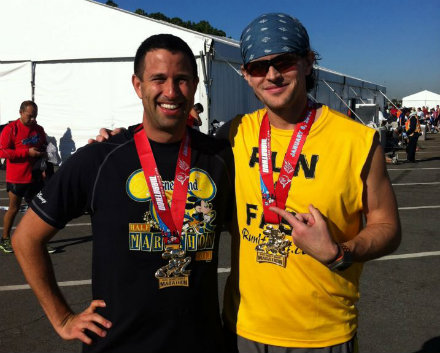
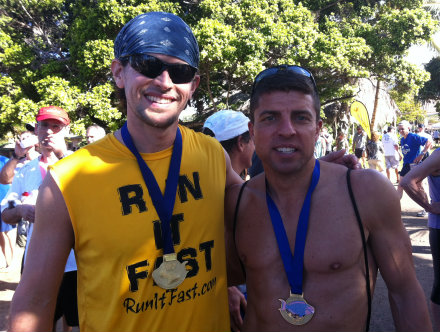

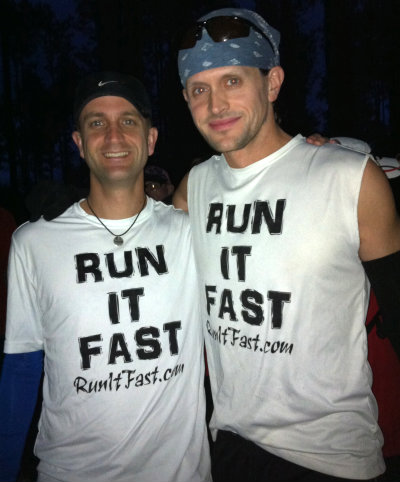


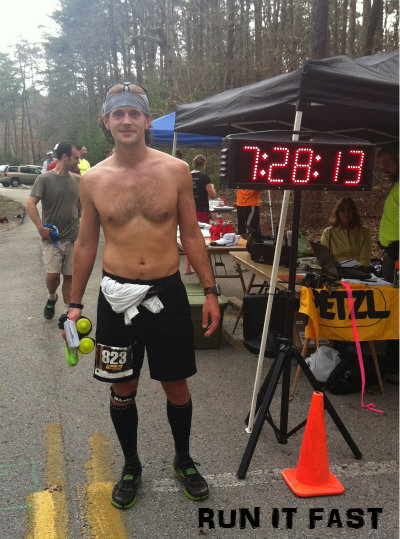

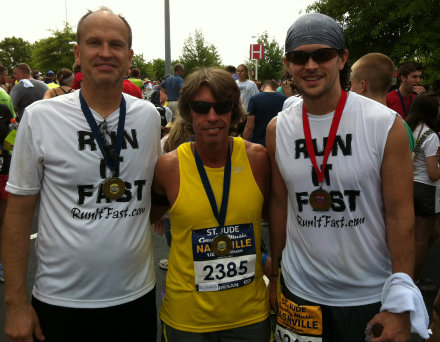
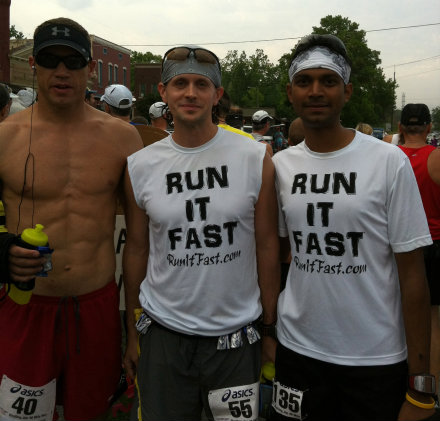
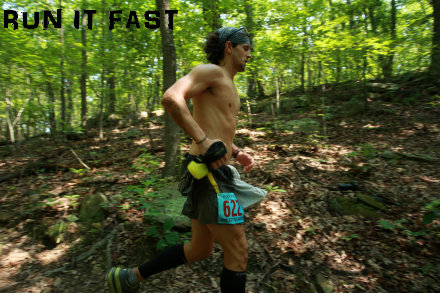

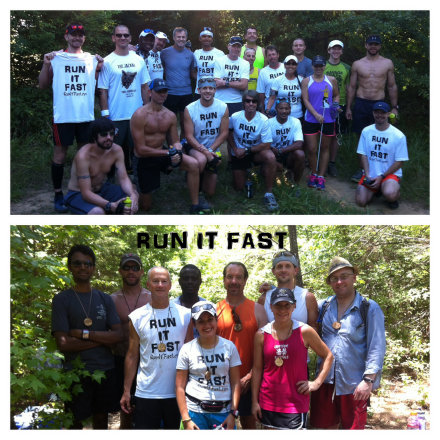
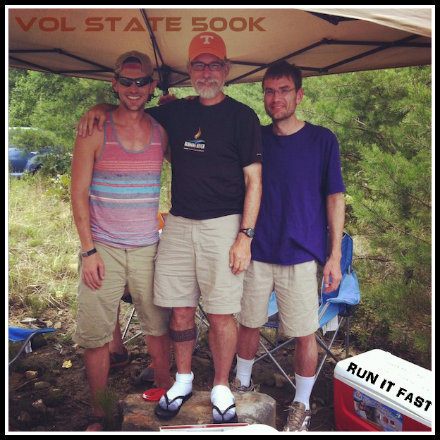
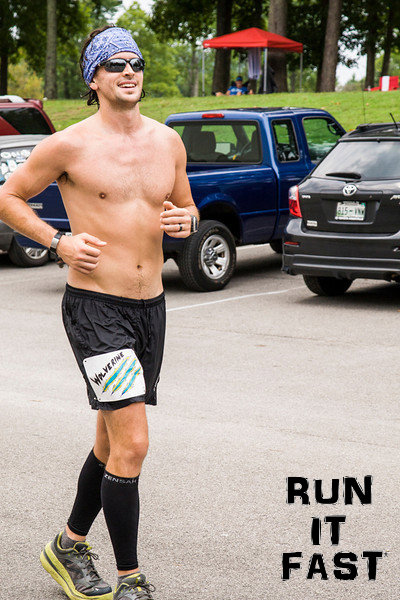

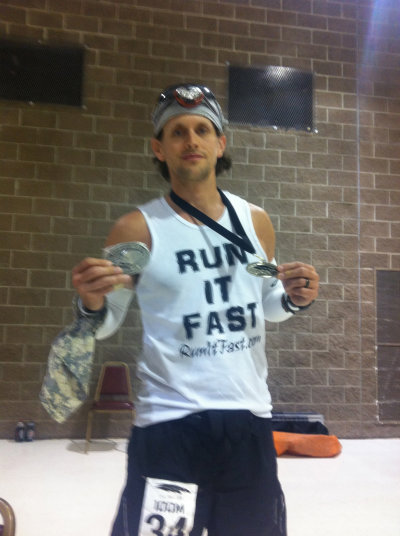
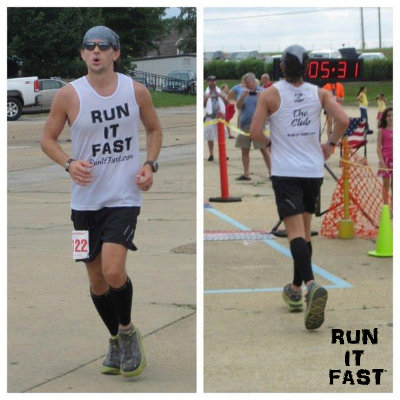
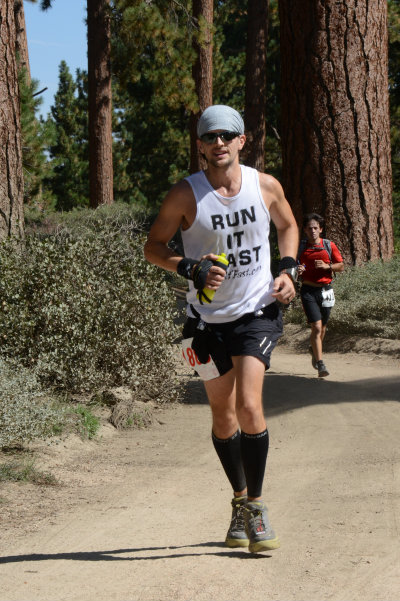
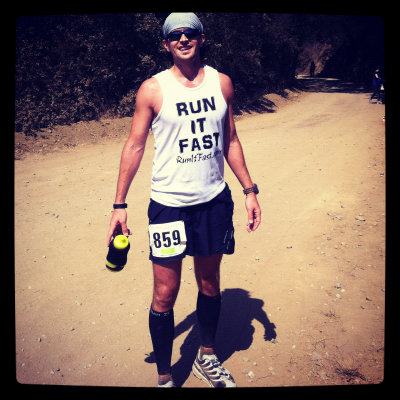
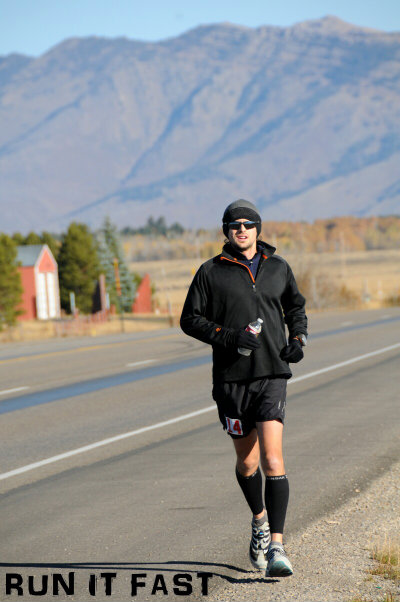
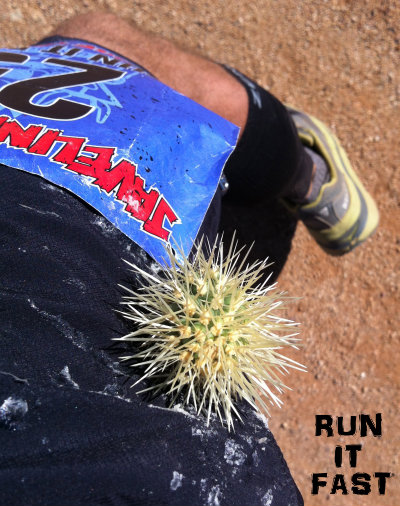
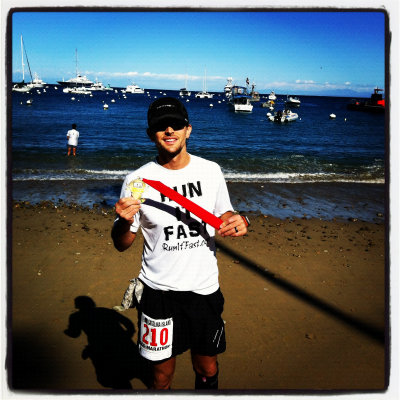

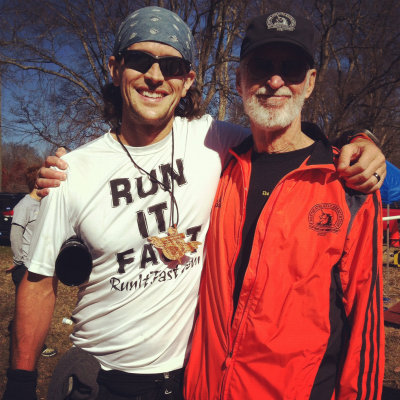
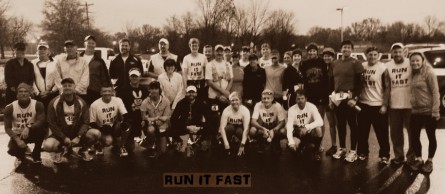
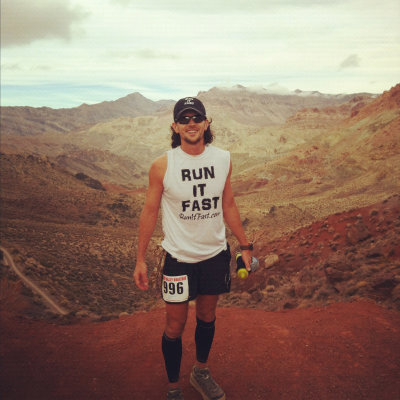
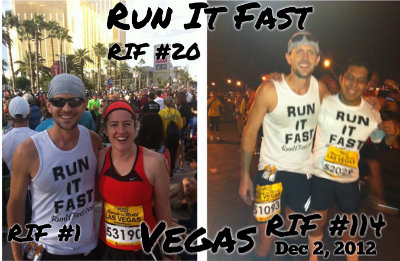
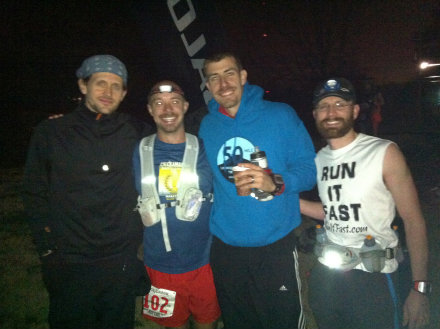

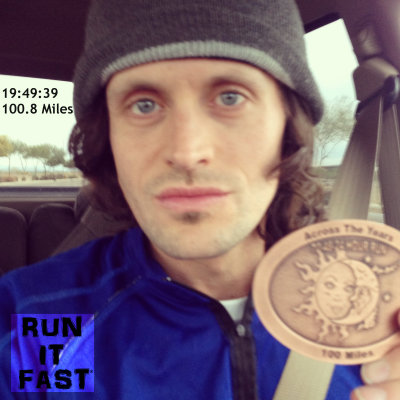
- Denmark Dash 5K (3.1) – 19:50 – Ran pretty well. Finished 8th overall, 2nd age group. – February 25, 2012
- Run for Haiti 5K (3.1) – 20:47 – Finished 3rd overall, 1st age group. – April 14, 2012
- Milan Glow in the Dark 5K (3.1) – 20:47 – Pretty warm nighttime 5K. Finished 2nd overall, 1st age group – April 19, 2012
- West TN Speech & Hearing 5K (3.1) – 21:50 – Cold and very windy. Ran poorly. 8th overall, small field. 1st of 2 races on this day. – April 21, 2012
- Leadership Jackson 10K (6.2) – 44:08 – Ran well after doing a 5K right before this one. Finished 2nd overall, 1st age group. – April 21, 2012
- Strawberry Festival 10K (6.2) – 43:11 – Planned to take it easy. I was in 10th place after three miles then everyone in front of me peeled off for the 5K finish so I had no choice but to Run It Fast and win this one. – May 12, 2012
- Zoom thru the Zoo 4 Miler (4.0) – 28:25 – A very hot and humid afternoon in Memphis. I gave a strong effort and finished 31st out of about 1,200 runners. – May 24, 2012
- Buford Pusser 5K (3.1) – 20:57 – One of my favorite 5K’s in West TN. It’s always hot, humid, and very sunny for this one. I finished 6th overall, 1st in my age group. – May 26, 2012
- Milan Knock Out Cancer 5K (3.1) – 21:02 – Small field of 20 runners. I won this one. It was hot and humid and no one was close to me for the last 1.5 miles. 21:02 should never win a 5K though, even in the Sahara. – May 28, 2012
- Bluesfest 5K (3.1) – 19:32 – Hot June day. I ran well and scored a new PR while finishing 4th overall and 1st in my age group. – June 2, 2012
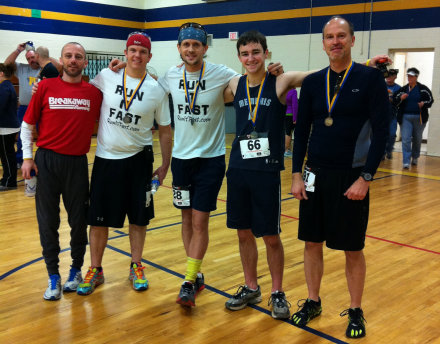

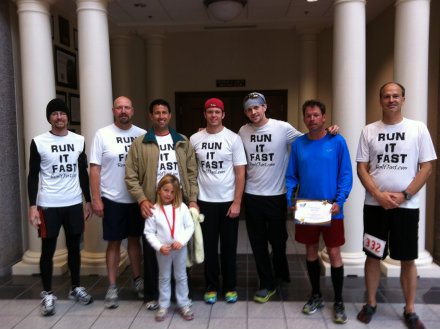
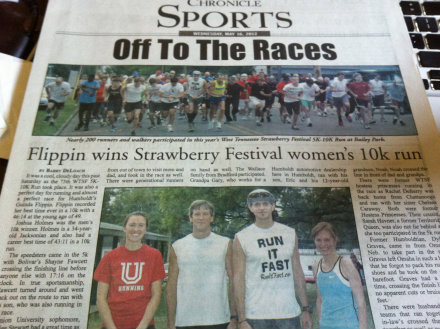
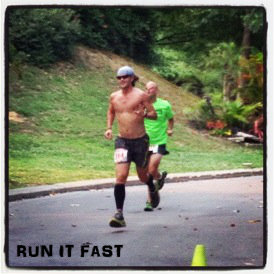

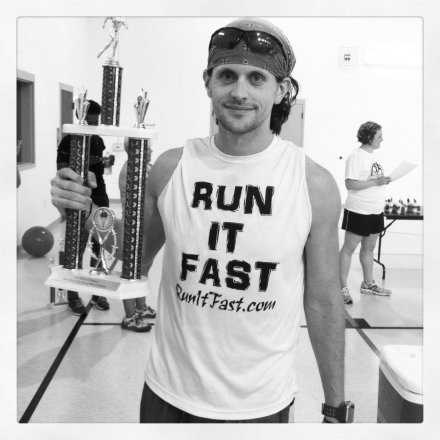
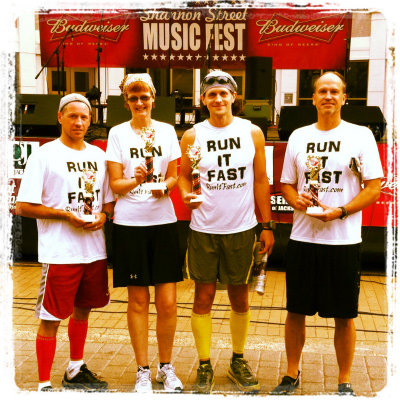
I want to thank all the great people in the Run It Fast family, my friends, and especially my family for all of their support in helping make 2012 such a great success for me. Remember that anything is possible if you set your mind to it. The mind is stronger than the body. – joshua holmes




